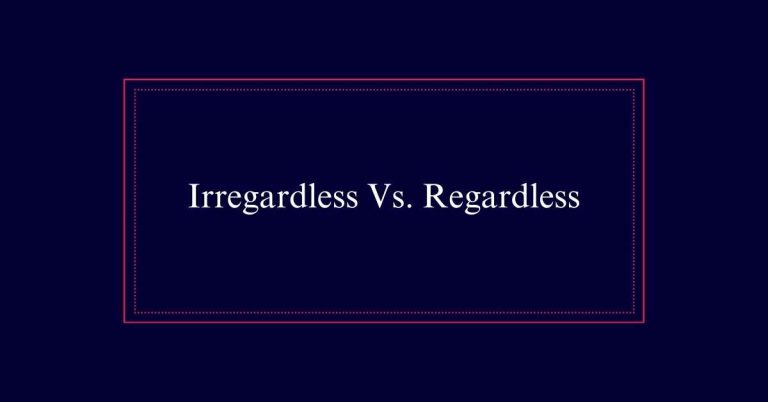What Is an Allegory?
An allegory is a literary device where characters, events, and settings represent abstract ideas, conveying deeper moral, political, or social meanings. Allegories extend throughout the entire story, often requiring readers to interpret the underlying messages.
Examples of famous allegories include George Orwell’s “Animal Farm,” which critiques the Russian Revolution, and C.S. Lewis’s “The Chronicles of Narnia,” which incorporates Christian themes.
Understanding Allegory
Understanding allegory involves recognizing how it conveys complex messages through storytelling. This literary device allows authors to embed deeper meanings within seemingly simple narratives.
By creating a layer of distance between the writer and potentially risky messages, allegory provides a shield against direct criticism. Stories have a natural appeal, making complex ideas more relatable and easier to grasp.
Allegories often use vivid characters and plotlines to symbolize broader concepts, such as moral lessons or political commentary. This method engages readers, encouraging them to look beyond the surface to uncover hidden meanings.
Defining Allegory
Allegory is a narrative technique where characters, events, and settings symbolize deeper meanings or abstract concepts. This literary device allows authors to convey complex ideas through a structured narrative.
Unlike simple symbols or metaphors, an allegory extends throughout the entire story, creating a cohesive framework of hidden meanings. Each element within the narrative stands for something beyond its literal sense, often reflecting moral, political, or social themes.
Allegories are methodically constructed to make sure that the symbolic interpretations align with the overarching message. Famous examples include George Orwell’s ‘Animal Farm,’ which critiques totalitarian regimes, and C.S. Lewis’s ‘The Lion, the Witch, and the Wardrobe,’ which illustrates themes of good versus evil.
Purpose of Allegory
The primary purpose of allegory is to convey complex and layered messages through storytelling. Allegories allow writers to explore deep and often controversial themes in an indirect way. By using symbolic characters and narratives, authors can address social, political, or moral issues without being overt. This method creates a safe distance between the writer and the sensitive topics they discuss.
Additionally, allegories engage readers on multiple levels, encouraging them to think critically and interpret underlying meanings. This layered approach can make the message more memorable and impactful.
Storytelling in Allegory
Storytelling in allegory captivates readers by weaving symbolic narratives that convey deeper meanings. Authors use allegory to explore complex themes in a simplified manner. By embedding symbols and hidden messages within the story, readers are encouraged to look beyond the surface. This method of storytelling relies on the audience’s ability to interpret and find significance in these symbols.
These elements enrich the narrative, making the audience engage deeply with the text. Through allegory, stories become more than mere entertainment; they become tools for reflection and understanding.
- A talking animal representing a political figure
- A magical land symbolizing a lost paradise
- A journey reflecting personal growth and transformation
- A battle between good and evil mirroring moral conflict
Allegory Vs. Other Devices
In contrast to metaphors and similes, allegories extend beyond individual comparisons to create entire narratives filled with symbolic meaning.
While a metaphor might compare life to a journey and a simile might liken bravery to a lion, an allegory constructs a story where each character, event, and setting carries deeper significance. This complexity allows allegories to explore intricate themes and moral lessons.
Unlike simple symbols or allusions, which may only appear briefly, allegories weave these elements into the fabric of the narrative. For instance, George Orwell’s ‘Animal Farm’ is not just a tale of farm animals but a detailed critique of political systems.

Characteristics of Allegory
Allegories feature symbolic representation, where characters and events stand for abstract ideas. This technique allows writers to embed deeper meanings within their narratives.
Key characteristics of allegory include:
- Symbolism: Characters, settings, and events symbolize broader concepts.
- Moral Lessons: Allegories often contain lessons about ethics and morality.
- Dual Layers of Meaning: The story operates on both a literal and a metaphorical level.
- Consistency: The symbols used are consistent throughout the narrative.
Creative Uses in Writing
Authors harness allegory’s symbolic potential to explore imaginative domains and complex themes. This creative use allows writers to embed deeper meanings within their narratives.
By employing allegory, authors can address intricate subjects such as morality, politics, and human nature without stating them outright. This technique also aids in engaging readers on a more profound level, prompting them to search for hidden messages.
In addition, allegorical stories often employ fantastical elements like personification, time travel, and magic, which enrich the narrative and captivate the audience.
Types of Allegories
Different types of allegories span from biblical to classical to modern interpretations. Each type uses unique symbols and narratives to convey deeper meanings.
Biblical allegories draw from religious texts, offering moral and spiritual lessons.
Classical allegories often reference ancient myths and legends, using gods and heroes to illustrate human virtues and vices.
Modern allegories, meanwhile, use contemporary settings and characters to discuss current social and political issues. These various forms can help readers connect with the allegorical message in different cultural contexts.
- Biblical Allegories: Stories from religious texts with moral teachings.
- Classical Allegories: Ancient myths illustrating virtues and vices.
- Modern Allegories: Contemporary stories addressing social issues.
- Political Allegories: Narratives critiquing governance and power structures.
Famous Allegorical Works
Among the most celebrated allegorical works are those that have effortlessly integrated symbolic meanings into their narratives, engrossing readers across generations. George Orwell’s ‘Animal Farm’ is a prime example, representing the Russian Revolution through the story of a farmyard rebellion.
Similarly, John Bunyan’s ‘The Pilgrim’s Progress’ uses the journey of its protagonist, Christian, to depict the Christian’s spiritual journey toward salvation.
Dante Alighieri’s ‘The Divine Comedy’ stands out as an intricate allegory of the soul’s journey through Hell, Purgatory, and Heaven.
C.S. Lewis’s ‘The Lion, the Witch, and the Wardrobe’ also employs allegory, symbolizing the battle between good and evil through a fantastical world. These works continue to captivate readers with their rich layers of meaning.
Symbolism and Moral Lessons
The rich layers of meaning in allegorical works often hinge on the use of symbolism and the conveyance of moral lessons. Symbols in these narratives represent broader concepts and ideals. Through these symbolic elements, allegories impart ethical teachings and reflections on the human condition.
- A lonely tree in a barren landscape: Symbolizes isolation or moral decay.
- A bright, guiding star: Represents hope and enlightenment.
- A labyrinth: Conveys confusion or the search for truth.
- A chained figure: Depicts oppression or the struggle for freedom.






